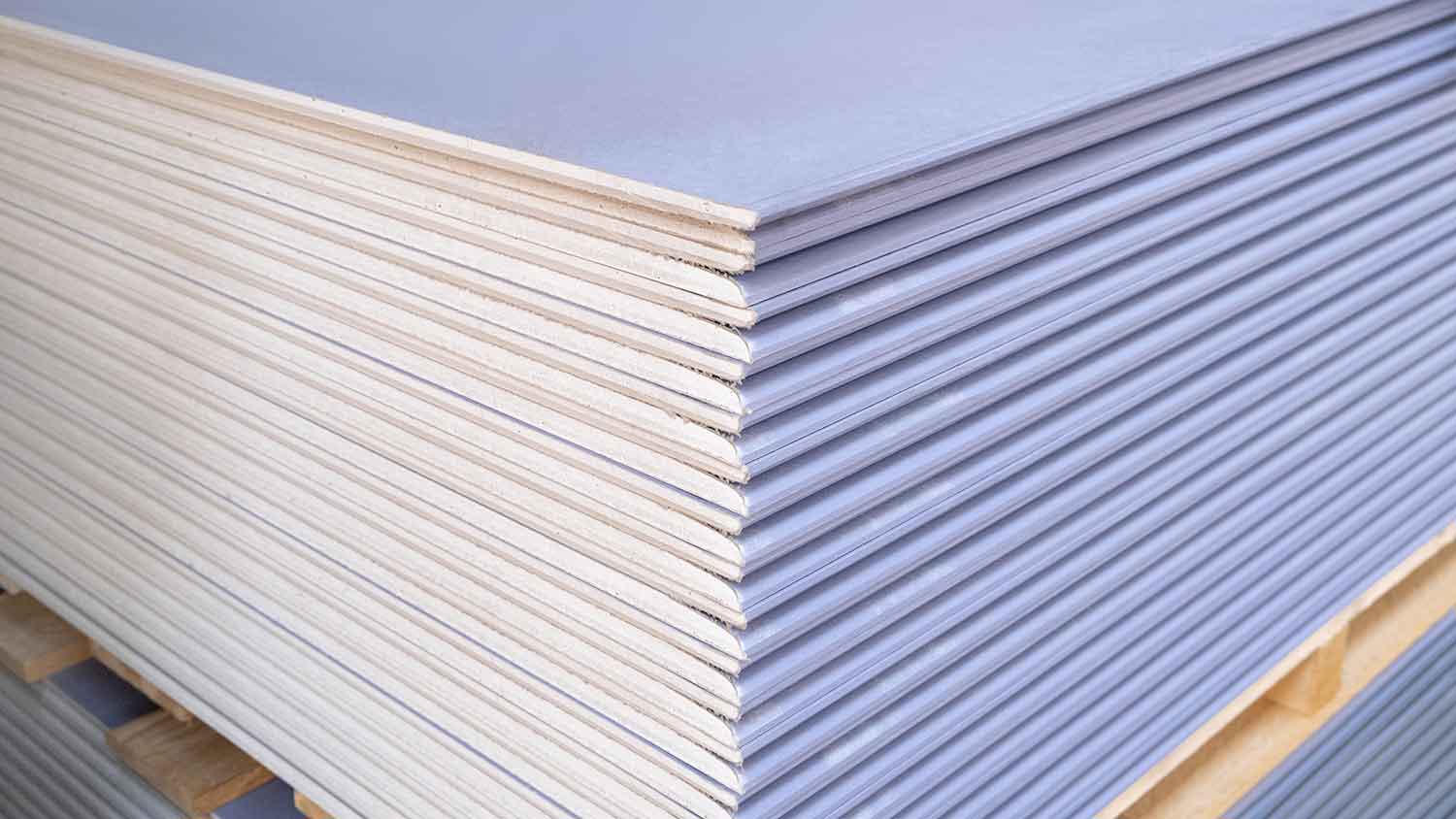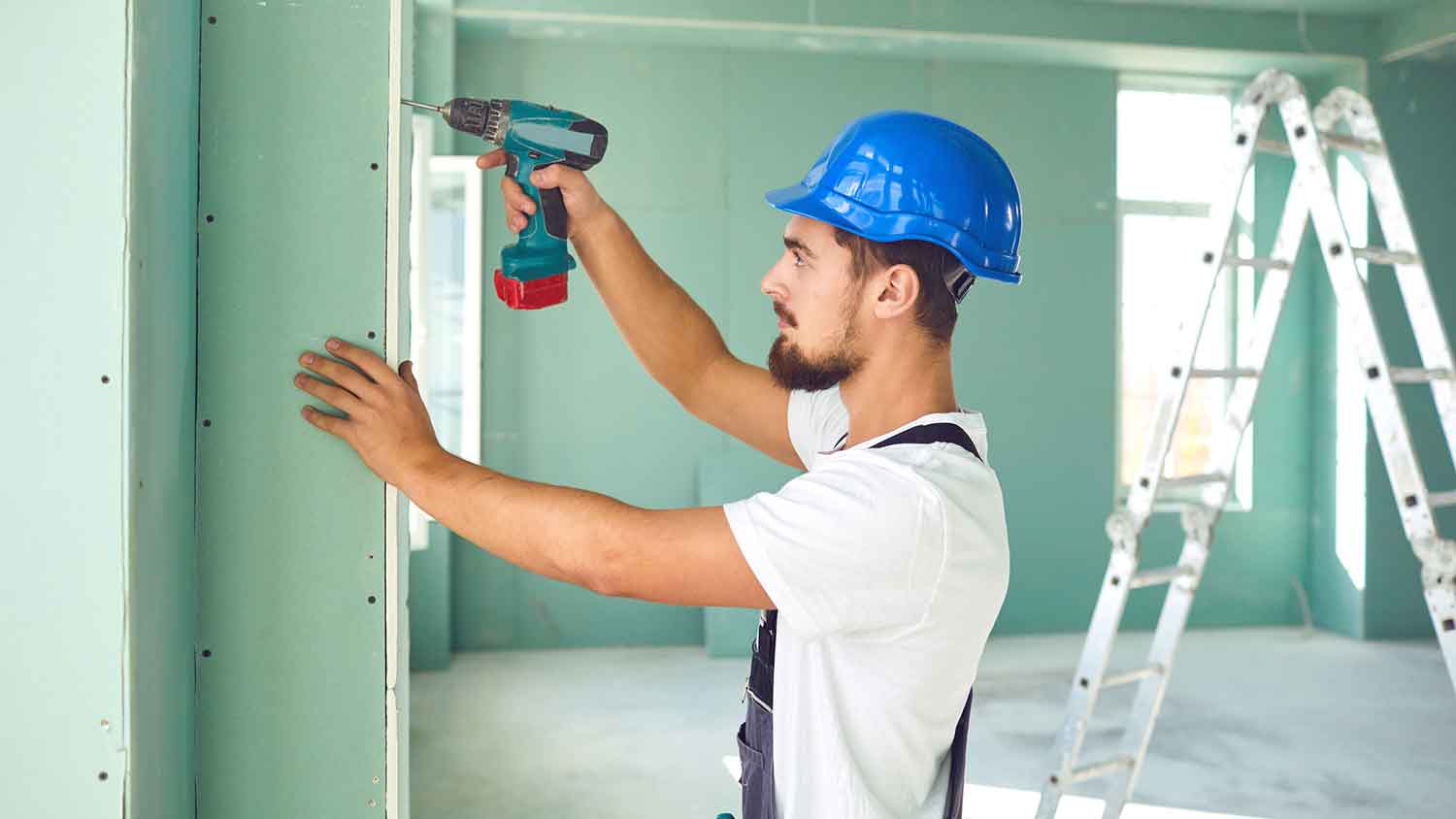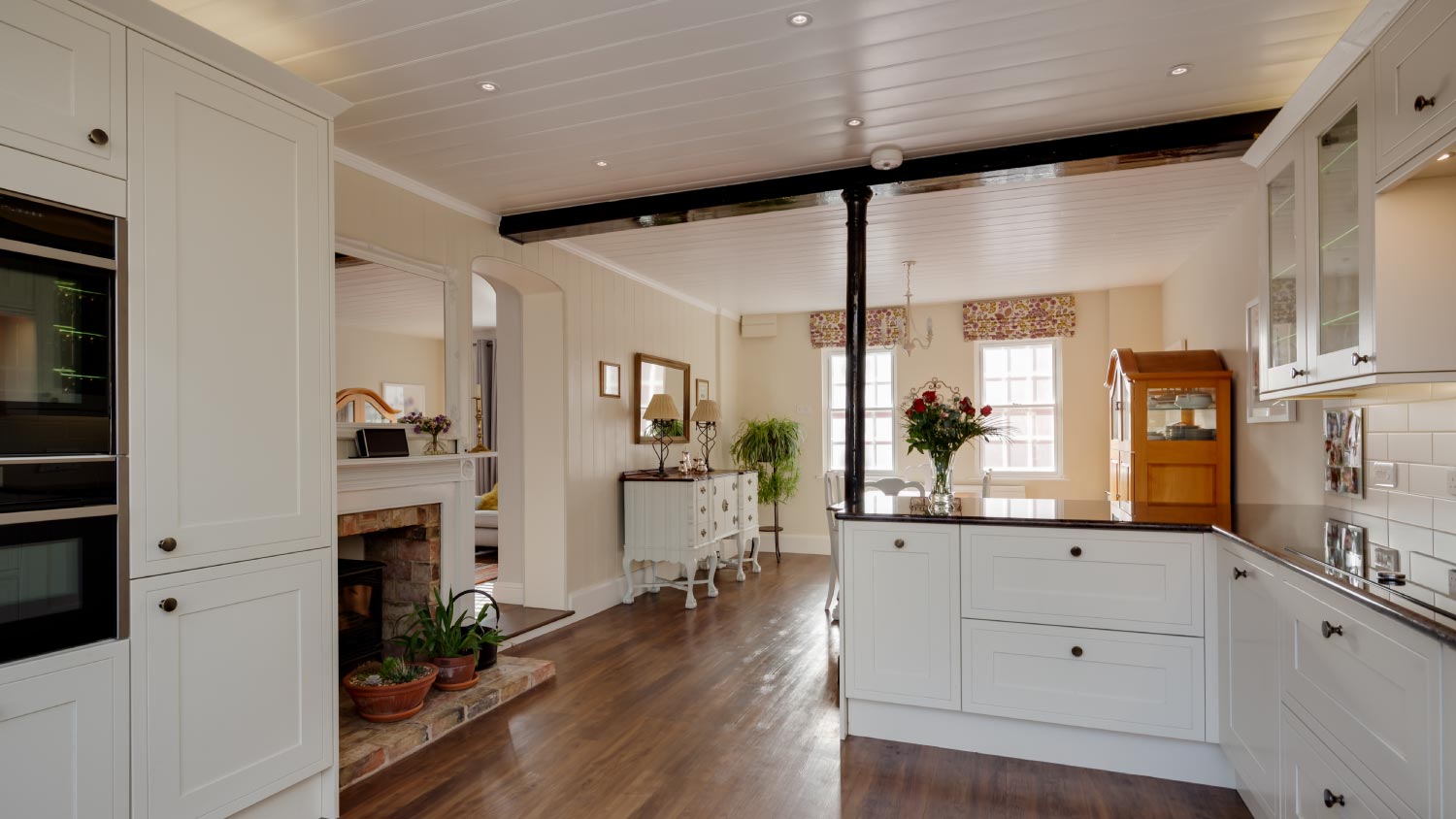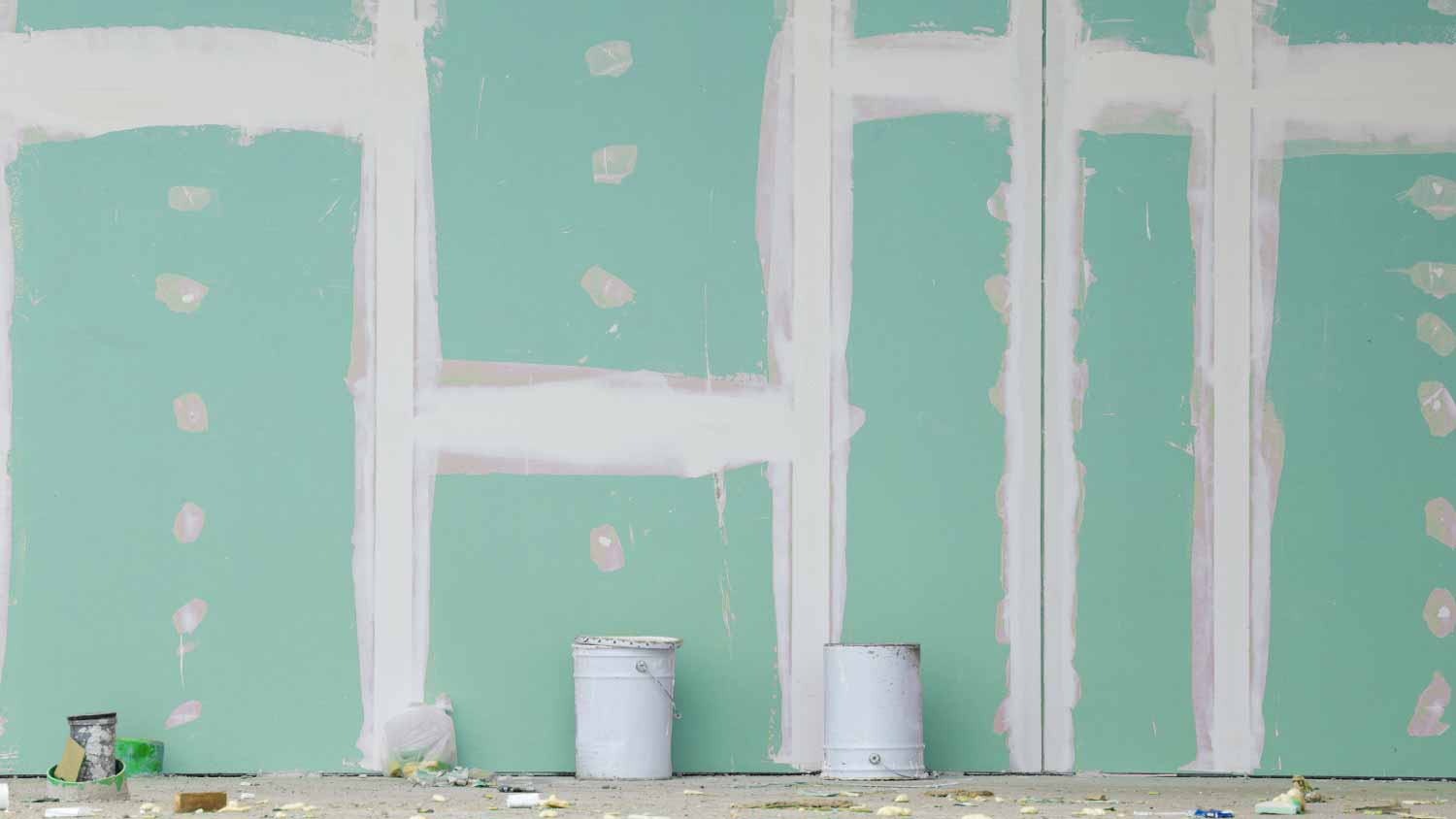
Installing drywall is the most common way to finish your home’s interior. Use this drywall installation cost guide to see what your project is likely to cost.
Moisture and mold have met their match


Purple and green drywall boast moisture and mold-resistant properties.
Purple drywall is best for areas that may experience standing water.
Green drywall is a more cost-effective option.
Selecting the appropriate building materials is crucial for achieving both functionality and aesthetics in the home. Purple drywall and green drywall have recently emerged as noteworthy drywall options, each with its own unique benefits and applications. These colorful versions of conventional gypsum boards have become increasingly popular due to their enhanced properties and eco-friendly features. If you're selecting drywall for home construction, renovation, or another project, take a look at purple drywall versus green drywall to see which makes sense for you.
Purple drywall and green drywall, while both specialized variants of traditional gypsum board, exhibit key differences in their applications and properties. Purple drywall, also known as mold-resistant drywall, has been engineered to hinder the growth of moisture and mold.
Green drywall, often referred to as greenboard, resists moisture to a lesser extent than purple and is ideal in rooms that have occasional moisture exposure, like laundry rooms. While both types provide superior moisture resistance in comparison to traditional drywall, their specific use depends on the amount of moisture protection required for a given room.
When taking on this project, expect questions only a pro can answer. With our network of local pros, you'll get the job done and your questions answered—without the hassle and stress of doing it yourself.

Purple drywall is a specialized type of gypsum wallboard that effectively resists moisture and mold growth. Its use is mainly in rooms vulnerable to high humidity levels, such as bathrooms and kitchens. Moisture-resistant paper facing and a specifically designed gypsum core constitute purple drywall, making it a necessary option for preserving wall longevity and structural integrity in environments exposed to dampness. The distinctive purple color is used to differentiate it from regular drywall, serving as a visible indication of its resistance to moisture.
| Pros | Cons |
|---|---|
| Moisture resistant | High cost |
| Mold resistant | Limited availability |
| Durable | Requires skilled installation |
| Fire resistant | Heavy material |
Best for:
Rooms with high humidity levels, such as kitchens, or mold-prone areas, such as bathrooms.
Sustainable construction or green building projects to improve indoor air quality.
Areas where the use of fire-resistant building materials is crucial.
Purple drywall offers numerous benefits that make it a popular choice for construction and renovation projects. Its exceptional resistance to moisture makes it an excellent choice for areas with high humidity levels, ensuring walls maintain their structural integrity over time and are not damaged by exposure to water. Its mold resistance also adds to its appeal, helping prevent mold and mildew growth and contributing to a healthier indoor environment.
Purple drywall’s enhanced durability makes it less susceptible to sagging or deterioration, particularly in humid conditions. Purple drywall naturally features fire-resistant properties, making it a safe choice for use in both residential and commercial buildings. Another added benefit of purple drywall is its natural soundproofing abilities.
While there are exceptional benefits to using purple drywall, it does come with some drawbacks. One of the primary concerns is the cost. Purple drywall is typically more expensive than standard drywall. Its limited availability can also create a roadblock for construction, especially in remote areas where sourcing it may be challenging. This could potentially lead to delays or increased transportation costs.
The effectiveness of purple drywall’s moisture resistance hinges on correct installation, which means you’ll need a skilled drywall installer. Compared to standard drywall, the increased weight of moisture-resistant drywall makes suitable framing and support essential during installation, leading to more complicated construction projects that may demand additional labor and materials.

Green drywall is another type of gypsum board designed for use in areas with elevated humidity levels. It features a water-resistant paper covering that distinguishes it from standard drywall and provides a certain level of protection against moisture, although it is not entirely waterproof.
Greenboard is particularly useful for preventing water damage and mold growth in spaces prone to occasional splashes or dampness. However, it should not be used in areas that are consistently exposed to standing water, as it does not provide the same level of moisture resistance as purple drywall.
| Pros | Cons |
|---|---|
| Moisture resistant | Not ideal for wet areas |
| Prevents mold | Potential for damage |
| Affordable | Requires special handling |
| Easy installation | Environmental impact |
Best for:
Areas where mold and mildew are common concerns.
Projects with budget constraints as it is generally more affordable than specialized moisture-resistant drywall options.
Upgrade to moisture resistance without completely redoing the wall structure, especially in older homes.
Green drywall's standout feature is its impressive moisture resistance, making it an excellent choice for areas prone to humidity, especially kitchens. This feature not only safeguards against potential water damage but also acts as a preventive measure against mold and mildew, enhancing the overall indoor air quality.
Due to its affordability, this variety of drywall is an ideal option for those with budget constraints but still need moisture resistance. Its ease of installation is compatible with standard drywall techniques, simplifying the construction process and reducing the need for specialized equipment or expertise. Additionally, its versatility enables painting and finishing similar to standard drywall, providing design flexibility.
While its moisture resistance is superior to standard drywall, it's not absolute, making it unsuitable for areas with constant water exposure or standing water, such as showers or saunas. Prolonged or severe moisture exposure can lead to degradation and the need for replacement or potentially cause structural issues over time.
It’s easier to install green drywall than purple, but it requires special care to prevent damage to the moisture-resistant paper covering. This can add complexity to the construction process. Additionally, the environmental impact of green drywall may not align with sustainability goals since it may not always use eco-friendly materials or practices, unlike other green building materials that are designed with stricter environmental criteria in mind.
| Purple | Green |
|---|---|
| High moisture resistance | Limited moisture resistance |
| Premium pricing | Cost-effective |
| Specialized install required | Easy installation |
Purple drywall has superior moisture resistance compared to green drywall, despite the latter featuring some moisture-resistant properties. If the area involves significant and prolonged moisture exposure, purple drywall is the more appropriate choice due to these advanced properties.
As two moisture-resistant drywall types, they both can offer longer life spans compared with standard drywall. However, purple drywall's moisture-resistant core and paper-facing make it less prone to deterioration, sagging, or damage from water exposure. This enhanced moisture resistance contributes to its durability.
Both purple drywall and greenboard drywall provide comparable levels of flexibility, affording a wide range of design options. Similar to standard drywall, these types of drywall can be painted, textured, or finished to meet the desired aesthetic. Decorative treatments, such as various paints and wallpapers, can be also used.
Green drywall is typically less expensive than the purple drywall installation cost. Enhanced moisture resistance, mold prevention, and the manufacturing process all contribute to purple drywall's higher cost. Green drywall, on the other hand, is more widely accessible. If your project requires moisture resistance but budget considerations are important, go with green drywall.
If you’re looking for the best soundproofing drywall, go with purple drywall. While both types can technically dampen sound levels, purple drywall uses a polymer between two layers to further limit noise transfer.
The installation process for green drywall closely mirrors that of traditional drywall. The drywall can be cut, hung, and finished using standard drywall tools and methods, making it more accessible to both professional drywall installers and DIY enthusiasts. While purple drywall also uses standard installation methods, it’s more difficult to work with due to its weight. This can add a layer of complexity to the process and requires hiring a professional drywall installer.
Purple drywall surpasses green drywall due to its superior moisture-resistant properties, which ensure long-term durability. By minimizing the need for premature replacements, this type of drywall contributes to resource conservation and reduces construction and renovation waste. The product also incorporates recycled materials, reducing its environmental footprint even further. Its moisture resistance promotes healthier indoor air quality by preventing mold growth.
From average costs to expert advice, get all the answers you need to get your job done.

Installing drywall is the most common way to finish your home’s interior. Use this drywall installation cost guide to see what your project is likely to cost.

Drywall texture can create an attractive finish and add dimension to your home’s walls. This guide breaks down the factors that influence the cost to texture drywall.

Installing beadboard ceilings is a great DIY project. Learn what to expect cost-wise from this project, whether removing or covering a popcorn ceiling.

What is hot drywall mud and when do you use it in a home improvement project? Keep reading to find out when this material comes into play.

Finding the right drywall contractor is key for any successful drywall project. Use these tips to find the perfect drywall pro for your next repair or installation.

You may be wondering if you need plastic behind moisture-resistant drywall. Explore this guide to find the answer and nail your next DIY.